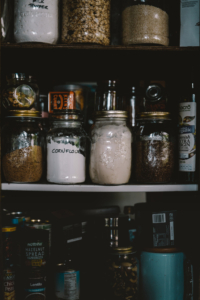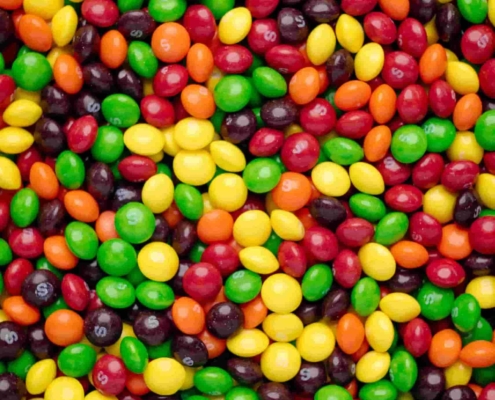In our busy lives ensuring the safety and well-being of our loved ones is important. One way to do that is by having a well-stocked home first aid kit ready to tackle life’s little emergencies. Whether it’s a scraped knee, a minor burn, or even something more serious, a properly prepared first aid kit can be a lifesaver and keep you out of that emergency room. In this article, we’ll walk you through the essentials of creating a home first aid kit, so you can have peace of mind knowing you’re prepared for the unexpected. Remember: mini kits can be created to have in various locations, like the car, or in your child’s backpacks.
Basic Supplies
- Adhesive Bandages: Various shapes and sizes, making them versatile for covering cuts,
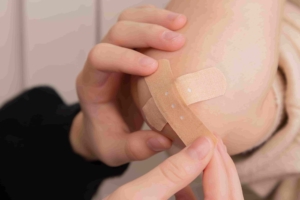 scrapes, and minor wounds.
scrapes, and minor wounds. - Sterile Gauze Pads and Adhesive Tape: Throw some first aid tape over it to secure it in place!
- Antiseptic Wipes or Solution: Clean it thoroughly to prevent infection.
- Tweezers and Scissors: Come in handy for removing splinters, thorns, or foreign objects embedded in the skin. Scissors with blunt tips are useful for cutting tape, gauze, or clothing away from wounds without risking further injury.
- Disposable Gloves: Protect both the person administering aid and the person receiving it from potential contamination. They are crucial in situations involving bodily fluids or open wounds.
- Cotton Balls and Swabs: For applying antiseptic solutions, cleaning wounds, or applying ointments. Cotton swabs are particularly helpful for precise cleaning in small or sensitive areas.
- Adhesive Cloth Tape: This type of tape is durable and adheres well to skin. It’s useful for securing bandages and gauze in place.
- Pain Relievers: Include over-the-counter pain relievers like acetaminophen and ibuprofen.
- Antihistamines: Allergic reactions can happen unexpectedly, so it’s wise to have antihistamines on hand.
- Topical Antibiotic Ointment: Applying antibiotic ointment to minor wounds helps prevent infection and promotes faster healing.
- Hand Sanitizer: In situations where soap and water aren’t readily available, hand sanitizer maintains proper hand hygiene when providing first aid. Choose a sanitizer with at least 60% alcohol content for effective disinfection.
- CPR Face Shield or Barrier Device: A CPR face shield or barrier device is important if you feel confident in performing CPR to someone
- Elastic Bandage: Elastic bandages, also known as compression bandages, or tensor bandages to assist with a sprain
- Instant Cold Packs: Single-use cold packs can quickly reduce pain and swelling associated with injuries like sprains, strains, or bruises. They activate when you squeeze or shake them, providing instant relief.
- Emergency Blanket: Also known as space blankets or Mylar blankets, these compact, reflective blankets are crucial for keeping someone warm in emergency situations. They are especially useful in cases of shock or exposure to extreme cold.
Additional Basic Supplies
- Burn Dressings or Burn Gel: Burn dressings or burn gel (like aloe vera) provide relief and protection for minor burns, helping to cool the skin and alleviate pain.
- Eye Wash Solution: Eye injuries can occur from foreign particles, chemicals, or other accidents. Eye wash solution and eye cups are crucial for flushing out foreign substances and soothing irritated eyes.
- Triangle Bandage: A tool that can be used as a sling for arm injuries, a head covering, or as a makeshift bandage if needed. It’s an adaptable addition to your first aid kit.
- Emergency Whistle: Can help attract attention and signal for help. It’s a compact tool that can be attached to the outside of your first aid kit.
- Safety Pins: Can be used to secure bandages, clothing, or improvised slings.
- Thermometer: To check for fever and to monitor a fever
- Emergency Contact List: Include a list of important emergency contacts, including family members, neighbors, and local medical facilities.
- Personal Medications: Include a list of them for each household member, and a location as to where to find them, including your family doctors contact information.
- Tourniquet: While not commonly needed, a tourniquet can be essential for controlling severe bleeding from a limb in extreme situations. Ensure you understand how to use it correctly, as improper use can lead to complications.
- Tongue Depressors: Tongue depressors can serve various purposes, including applying ointments, spreading adhesive, or as makeshift finger splints.
Organization and Storage
Choosing a suitable container for your kit is essential. You want something that’s durable, easy to carry, and keeps your supplies organized, clean and dry. Place the kit in a location that’s easily accessible to all family members but out of reach to young children. In an emergency, you don’t want to be searching for it. Keep the kit in a cool, dry place away from direct sunlight and extreme temperatures, as heat and humidity can degrade some items. Make sure all items are securely sealed and organized within the kit to maintain their sterility and readiness.
First Aid Kit Maintenance
Many of the items in your first aid kit, such as medications, ointments, and Band-aids, have expiration dates. It’s important to inspect these dates regularly and replace any expired items promptly. Expired products may lose their effectiveness or even become harmful. Make it a routine to go through your kit taking note of any items that need replenishing or replacing.
Whenever you use an item from your first aid kit, put a note in your shopping list to restock it. This ensures that your kit is always fully equipped and ready for emergencies. For instance, if you use adhesive bandages or an antiseptic wipe, replace them as soon as possible.
Remember that needs can change, so update your kit accordingly to meet your family’s evolving requirements. Younger years require more Band-aids, sporty teenage years more cold packs…
Personalizing Your First Aid Kit
Tailor your first aid kit to your family’s unique activities and needs. If you are into sports or outdoor adventures, consider adding extra items like instant cold packs or ankle braces. Include prescription medications and medical devices for anyone in your household who requires them, and don’t forget to include emergency contact information and medical history.
Handling Common Household Injuries
Lastly, familiarize yourself with how to handle common household injuries. Learn how to provide first aid for cuts, burns, bruises, sprains, strains, and fractures. Find a local training center and become a certified first-aider. Recognize the signs of allergic reactions and know when to use an EpiPen if necessary.
In conclusion, creating a home first aid kit is a practical and caring step toward ensuring your family’s safety. By assessing your needs, stocking essential supplies, staying organized, and educating yourself, you’ll be well-prepared to handle life’s unexpected moments.



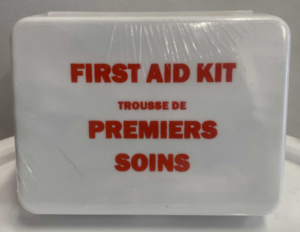


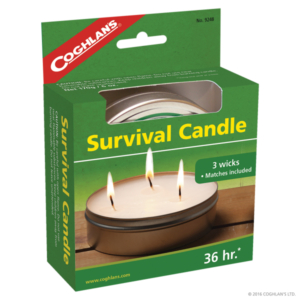
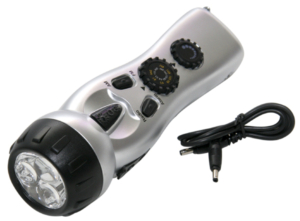
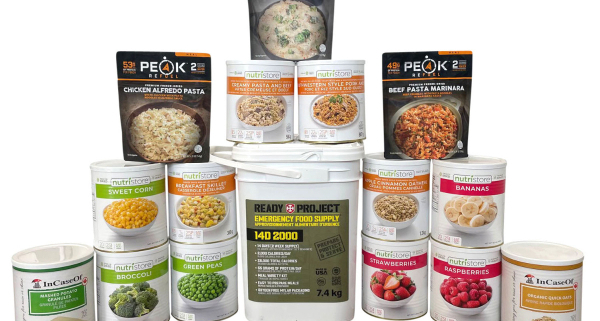
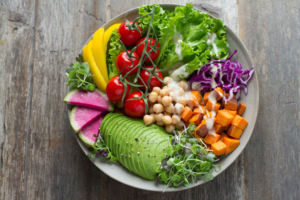 it’s important to stock foods that provide essential nutrients to keep your energy levels up and maintain overall health.
it’s important to stock foods that provide essential nutrients to keep your energy levels up and maintain overall health.
